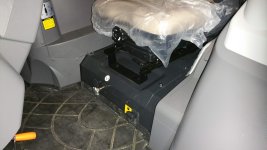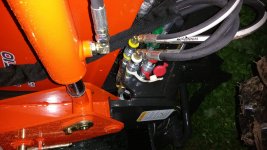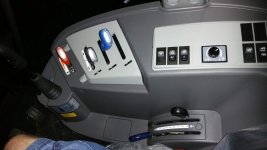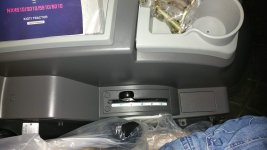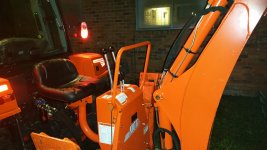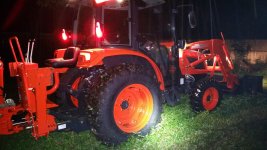I had my dealer make up a short loop of hydraulic hose with 2 male QA ends, that I insert into the two ports of my detented remote when I'm not using an implement like the backhoe, on the circuit. This eliminates the possibility of accidentally deadheading the hydraulic pump. No need to remove the detent balls or use bungees, etc.
This is another method of insuring that you dont accidently deadhead the pump. Lets define a few things either for the benefit of the original poster or others.
Deadhead the pump. Means operating the hydraulic pump into a "brick wall", in other words instead of the normal open center hydraulic flow path from the outlet of the hydraulic pump going thru the valves and piping and then dumping back into the tank (the transmission cavity of the tractor). The flow path is diverted by opening a valve but the flow path has no where to go as in being directed to a rear remote quick connect outlet with nothing terminated on that remote quick connect. So instead of the fluid returning back to the tank it looks into that "brick wall" of the quick connect, the pressure rises to the level that the Pressure Relief Valve is set for and the fluid then returns back to the tank thru the restriction of the Pressure Relief Valve.
This returning of the fluid to the tank thru the PRV, causes the hydraulic pump to "work very hard" and causes the fluid to heat up and the pump to heat up and causes the engine to work against this load.
When Coyote, put his loop of hydraulic hose between the two rear remote outlets, he was insuring that even if he accidently left his remote valve in the detented position causing the fluid flow to go to what would normally be a "brick wall" without this loop, but with this loop the fluid flow now can go thru this loop of hose, and return relatively unimpeded back to the tank, not causing the pressure to spike up, and not causing the PRV to have to open. This allows the pump to pump the normal flow rate without straining itself by looking into a "brick wall" deadheaded condition.
Now to explain the relationship of pump flowrate and pressure.
The first thing you need to understand is that, pumps don't make pressure they make flow. This is something you really need to understand to understand all that I have posted above. To explain that in more detail, a pressure rise only occurs when the flow of the pump comes up against a restriction. When a "brick wall" type of restriction is encountered, in other words a total restriction to the flow of the pump then the pressure would rise indefinitely until either a Pressure Relief Valve opened at some preset pressure or one of the lines/hoses burst or the pump turns into a grenade and explodes. Something has got to give.
The normal restriction to the flow of fluid from the pump is for example a hydraulic cylinder. As the flow is directed to the end of a cylinder the cylinder does not want to move. The flow of fluid is restricted by looking into the end of the cylinder so the pressure starts to rise. The pressure rise continues until the piston in the cylinder starts to move, and when it does so and continues to move the fluid flow continues into the bore of cylinder and the pressure stabilizes, until the piston reaches the end of its travel then if you continue to apply fluid flow to the end of the piston in the cylinder which can no longer move, then the fluid flow is impeded and the pump "deadheads" and the Pressure Releif Valve opens to relieve this pressure. The engine strains, the pump heats up the PRV squeals, and if you have a brain in your head, you let off of the control valve.

